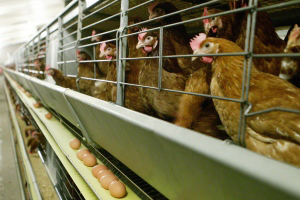Housing system impacts on egg microbiology

Alternative hen housing is becoming more commonplace in the egg market. However, a complete understanding of the implications for alternative housing systems on egg safety has not been achieved.
A study in the USA examined the impact of housing Hy-Line Brown, Hy-Line Silver Brown, and Barred Plymouth Rock hens in conventional cage, cage-free, and free range egg production systems on shell microbiology.
Eggs were collected at 4 sampling periods. Egg shell emulsion pools were formed and enumerated for total aerobic organisms, Enterobacteriaceae, and yeast and mould counts.
Hy-Line Brown and Hy-Line Silver Brown hens produced eggs with significantly different levels of aerobic organisms dependent on housing system. Eggs from conventional cages had significantly different levels of aerobic contamination in relation to hen strain with Hy-Line Silver Brown having the greatest. Hy-Line Brown and Barred Plymouth Rock hens produced eggs with significantly different levels of Enterobacteriaceae among housing systems with conventional caged eggs having the lowest level of contamination for the hen strains. There were no differences within each strain among housing systems for yeast and mould contamination.
The study shows that hen strain has an effect on egg microbial levels for various housing systems, and egg safety should be considered when making hen strain selections for each housing system.
Source: D. R. Jones , Egg Safety and Quality Research Unit, USDA Agricultural Research Service, Athens, GA and K. E. Anderson, Department of Poultry Science, North Carolina State University, Raleigh, NC USA
Poultry Science, Vol. 92












